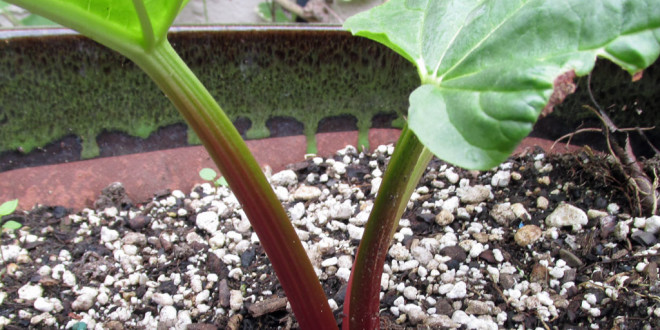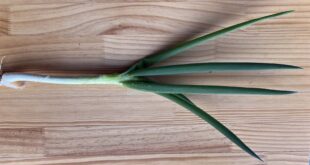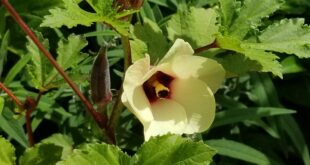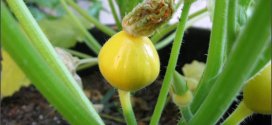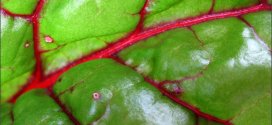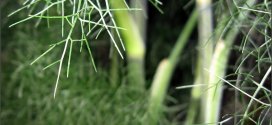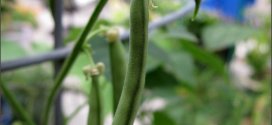Rhubarb is a perennial vegetable that grows well in most of the United States. Rhubarb is used in pies, tarts and sauces. Rhubarb should be planted at the end of one side of the garden where it will not be disturbed since it may be productive for five years or more. A half-dozen plants will provide enough rhubarb for a family of four.
Only the stalk is eaten. Do NOT eat the green leaves which are poisonous. Rhubarb is delicious in breads, cookies, pies, cobblers, jams, and sauces or condiments for meat. It can be frozen to be made into any delightful item you desire later. Combining a fruit and a vegetable into a pie makes this a great dessert in the summer. There is no better time to enjoy a piece of this delectable pie than on June 9th, National Strawberry Rhubarb Pie Day.
When to Plant
Spacing & Depth
Old roots may be dug and divided to make new plantings. Cut the roots into four to eight pieces. Each piece must have at least one strong bud. To improve vigor and leaf size, many gardeners divide the old plants and establish a new planting after at least 5 years of full harvest. Plantings older than this tend to begin crowding themselves out. Dig the roots of the most vigorous, healthy plants to establish a new bed the spring before the old planting is to be discarded.
Care
Harvesting
If seedstalks and flowers develop during the spring and summer, cut them from the base of the plant as soon as they appear and discard them. Vegetatively propagated, named varieties usually have been selected to produce fewer seedstalks than cheaper, seed-produced plants. The petioles (leafstalks) are of the highest quality (maximum color, flavor and tenderness) in early spring. They should be crisp and fairly thick. Yield and quality are highest if petioles that have just reached full size are harvested before any coarse fiber can develop.
Common Problems
Questions & Answers
A. No. The leafstalks will be of poor texture and flavor and oxalic acid may have migrated from the leaf blades.
Q. Why do my rhubarb plants send up seedstalks and produce small leaves and leafstalks? The petioles are not as large as they have been in previous years.
A. These conditions may result from excessive crowding, old plants or low soil fertility. Allow more space between rhubarb plants, divide parent plants and fertilize regularly. Some seed-propagated plants produce small foliage and many seedstalks even under the best conditions. Buy only named, vegetatively propagated varieties; or get divisions from another gardener who has a high-quality planting.
Selection & Storage
The Sonoma County Master Gardener Vegetable Planting Summary recommends that rhubarb be planted December through March. Two varieties that do well in our area are the Crimson Cherry (red-stalked) and Victoria (speckle-stalked).
The deeper the red, the more flavorful the stalks are likely to be. Medium-size stalks are generally more tender than large ones, which, may be stringy. For storage, first trim and discard the leaves. The freshly harvested stalks can be kept in the refrigerator, unwashed and wrapped tightly in plastic, for up to three weeks.
Nutritional Value & Health Benefits
Nutritionally, it is low in calories and very acidic (pH 3.1). The acid is offset by the addition of sugar, which also increases the calorie count. Rhubarb is 95 percent water and has potassium and a modest amount of vitamin C. Although rhubarb can be tough and stringy, it does not contain a great deal of fiber, only 2 grams per cup. Unfortunately the high calcium content it supplies is bound by oxalic acid and so it is not easily absorbed by the body. Don’t count on rhubarb as a source of dietary calcium.
Recommended Varieties
Canada Red (long, thick stalks, extra sweet)
Cherry Red (rich red inside and out)
Crimson Red (tall, plump petioles)
MacDonald (tender skin; brilliant red)
Ruby
Valentine (petioles 22 by 1-1/2 inches, good flavor)
Green Petioles (leafstalks)
Victoria (shaded with red)
